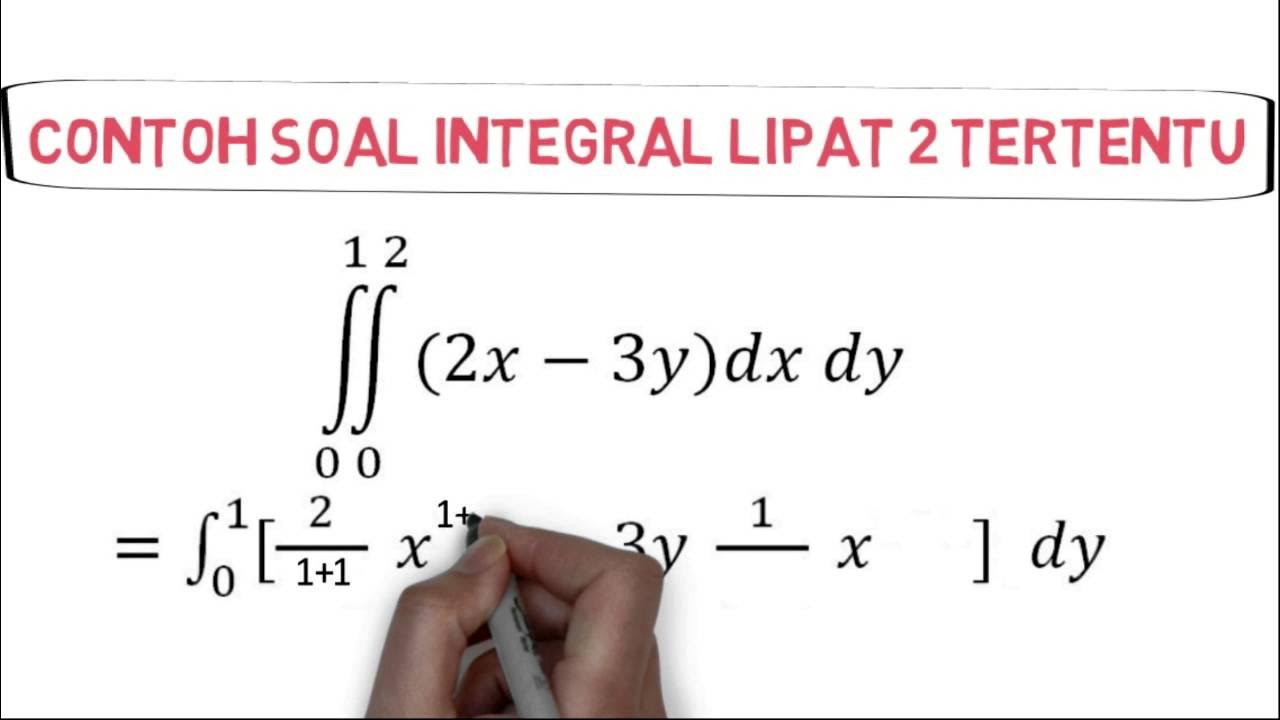Double Integrals
Summary
TLDRThis video provides a detailed exploration of double integrals, focusing on evaluating iterated integrals. It covers key concepts such as changing the order of integration, integrating with respect to different variables, and applying techniques like substitution. The presenter walks through multiple examples to demonstrate both the step-by-step process and the ultimate solution. The script also highlights important nuances, such as the relationship between the limits and the corresponding variables. Viewers are guided through several problems, reinforcing the concepts and offering insights into solving these types of integrals effectively.
Please replace the link and try again.
Q & A
What does the notation 'dx' and 'dy' signify in the context of double integrals?
-In double integrals, 'dx' and 'dy' indicate the variables of integration. 'dx' suggests integration with respect to x, while 'dy' means integration with respect to y. The order in which the variables are integrated matters and affects how the limits of integration are applied.
Why is it important to treat x as a constant when integrating with respect to y?
-When integrating with respect to y, x is treated as a constant because the integration is only being performed on y. This simplifies the process of finding the antiderivative of expressions involving y while keeping x fixed.
What is the result of the double integral when the order of integration is reversed?
-Reversing the order of integration does not change the final value of the double integral, but the limits and variables need to be adjusted accordingly. The answer remains the same, as shown in the example where switching the order still yields 52/3.
How do we evaluate the integral of a function like 2y - 3x²y² with respect to x?
-To integrate 2y - 3x²y² with respect to x, treat y as a constant. The antiderivative of 2y with respect to x is 2yx, and the antiderivative of -3x²y² is -y²x³/3. After evaluating at the given limits (from 0 to 2), the result is 2y - y².
What is the process for solving integrals involving polynomial expressions like 8y + 4y² - 2y³?
-The process involves finding the antiderivative of each term in the polynomial expression. For 8y + 4y² - 2y³, the antiderivative is 4y² + 4y³/3 - 2y⁴/4. After substituting the upper and lower limits (0 and 1), the final answer is 29/6.
What role does u-substitution play in solving double integrals?
-U-substitution is used to simplify integrals by changing variables. In cases where a function involves compositions like 4x + y, u-substitution allows us to make the integral more manageable by substituting the expression with a new variable (u).
How do we handle integrals with expressions that involve e^u, like in the last problem?
-When handling integrals with e^u, we find the antiderivative of e^u, which is simply e^u. In cases where the integral involves a constant factor, like 1/16, this factor is multiplied with the result of the antiderivative. The limits of integration are applied after this.
Why do we reverse the order of integration in certain problems?
-Reversing the order of integration can simplify the process, especially when one variable is easier to integrate than the other. It is necessary when a particular order makes the evaluation more straightforward or when the original limits are complicated.
What is the purpose of using a constant, such as 1/16, in the final steps of an integral?
-A constant like 1/16 in the final steps of an integral is used to scale the result of the antiderivative. Constants may come from factoring out terms or adjusting the integral to match the desired limits or form.
How do you evaluate an integral like the one involving e^(9y) - 1?
-To evaluate the integral of e^(9y) - 1, you first find the antiderivative of e^(9y), which is e^(9y)/9. The antiderivative of -1 is simply -y. After applying the limits of integration and simplifying, you get the final result as 1/18 times (e^(18) - 19).
Outlines

This section is available to paid users only. Please upgrade to access this part.
Upgrade NowMindmap

This section is available to paid users only. Please upgrade to access this part.
Upgrade NowKeywords

This section is available to paid users only. Please upgrade to access this part.
Upgrade NowHighlights

This section is available to paid users only. Please upgrade to access this part.
Upgrade NowTranscripts

This section is available to paid users only. Please upgrade to access this part.
Upgrade Now5.0 / 5 (0 votes)





